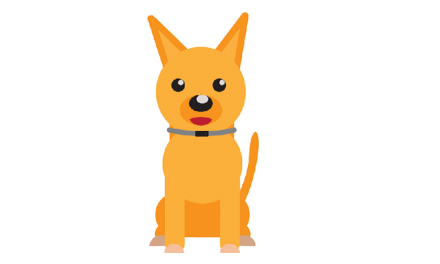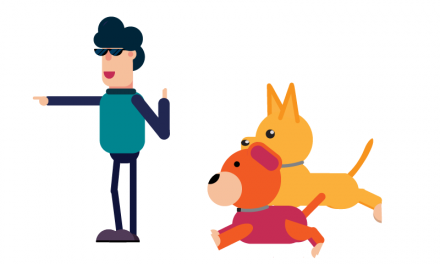
As with humans, exercise is a necessity for a dog’s physical and mental well-being. As per the latest studies, about 20 to 40 percent of dogs in the United States are reportedly seen by veterinarians as overweight and many of them are even clinically obese. Obesity in dogs is a major cause of distress in their lives, as it results in health complications including back problems, ligament tear, skin problems, difficulty breathing, whelping problems, cardiac problems and an increased risk of certain cancers. To combat obesity and a myriad of other issues, exercise is one of the best solutions.
Before Starting an Exercise
Before starting an exercise routine with your dog, it is important to consult a vet, who will check if your pet is healthy enough for increased physical exercise. This specifically applies to mature dogs, but even the young ones should be checked by the vet.
While taking your dog on a run, it is important to ensure that the pavement is not too hot for it. The paws of the animal should also be checked for abrasions prior to any exercise.
It is important to notice the body language of your dog. If it is being restless indoors or pacing about, it probably needs to go out for a nice, long walk. A short walk would also be sufficient to keep your beloved pet calm.
Exercises for Different Dogs
The type of exercises varies according to the dog’s age, individual needs, size and overall health. The ideal time for physical exercise is between 30 minutes and two hours. Hunting and working breeds such as shepherds and collies need the most exercise. Sometimes, it is a good idea to invest in a shock collar with remote, to make training more efficient. If the dog is short-nosed like a bulldog, it will not require a lot of daily exercise.
Even dogs that are handicapped require exercise. Such dogs are said to enjoy walks through neighborhoods and may even like to take part in water activities.
Puppies require short spurts of exercise and should not be taken out for daily jogging or jumping until they have finished growing. However, they should be made to run, walk and play at their own natural pace. As the puppy grows older, the walks can be made longer and longer, which can be made into runs gradually.
The approach to forming an exercise routine for a dog should be very gradual but consistent. Hence, it is strictly advised not to take your dog on long runs only on the weekends without making the dog do any exercise the rest of the week.
Warmup
In order to warm up your dog, its leash should be placed in the left hand and it should not be more than 2 feet long. You should first move at a light pace or stand in one place and move your dog around in circles.
Indoor Exercises
Cesar, a popular dog trainer, strongly emphasizes on exercising a dog every day, regardless of the time of day. If the dog cannot be taken outside, a number of exercises can be done indoors. Some indoor exercises are explained below.
Run the Dog Up and Down the Stairs
Stairs are a great way to engage your dog in a fun exercise, as the steps add a challenge to its workout. This is because the animal engages different muscles while walking up and down as compared to a regular walk or jog. In order to engage your dog in this exercise, you can throw a toy down the stairs and call out your pet’s name once it catches it.
Set Up Obstacle Courses for the Dog
Different treats can be laid out through an obstacle course setup with household items such as tables and rugs. Treats can be laid out under these items and behind doors. This would make your dog look for the treats and even tire it out in the process. Another great way to do this exercise is to use treat-dispensing toys as they would require the dog to physically push the toy to get the treat.
Fetch
Playing a normal game of fetch can also help the dog release some energy.
Treadmill
Simply putting your dog on a treadmill is a great way to exercise indoors. First, you should let your furry friend get familiarized with the sound and operation of the machine. Then, simply put your dog on the treadmill and hand it a treat. You should start with the treadmill at the lowest speed and hand it treats to keep it on the treadmill.
Ideally, you should position yourself right in front of the treadmill and hand your pet treats from there as your dog would feel the most comfortable this way. You may hold the leash as an aid but should never tie down your dog as it may prove to be very dangerous.
As the dog gets comfortable on the treadmill, the speed can be adjusted.
Tug of War
Tug of war is a great way to exercise the dog as it uses up stamina and strength. However, this exercise can also have some risks as it can bring out the predator instincts of your dog and can be unhealthy for the owner-dog relationship if there is not enough trust and respect in the first place. There needs to be a control over the dog’s instincts before engaging it in a healthy game of tug of war.
Other Exercises
Swimming is also considered a great exercise for dogs. However, you should never send your dog in rough or fast-paced waters, especially if it is already tired from any other movement. You should also never assume that your dog can swim well. Hence, it is always a smart idea to have a lifejacket on your pet. This even goes for seasoned canine swimmers.
You can also engage your dog in high-energy competitive sports such a flyball, which involves the dog going through a relay involving hurdles. Other fun ways include taking your dog on a hike or simply spending a few hours at the beach.









